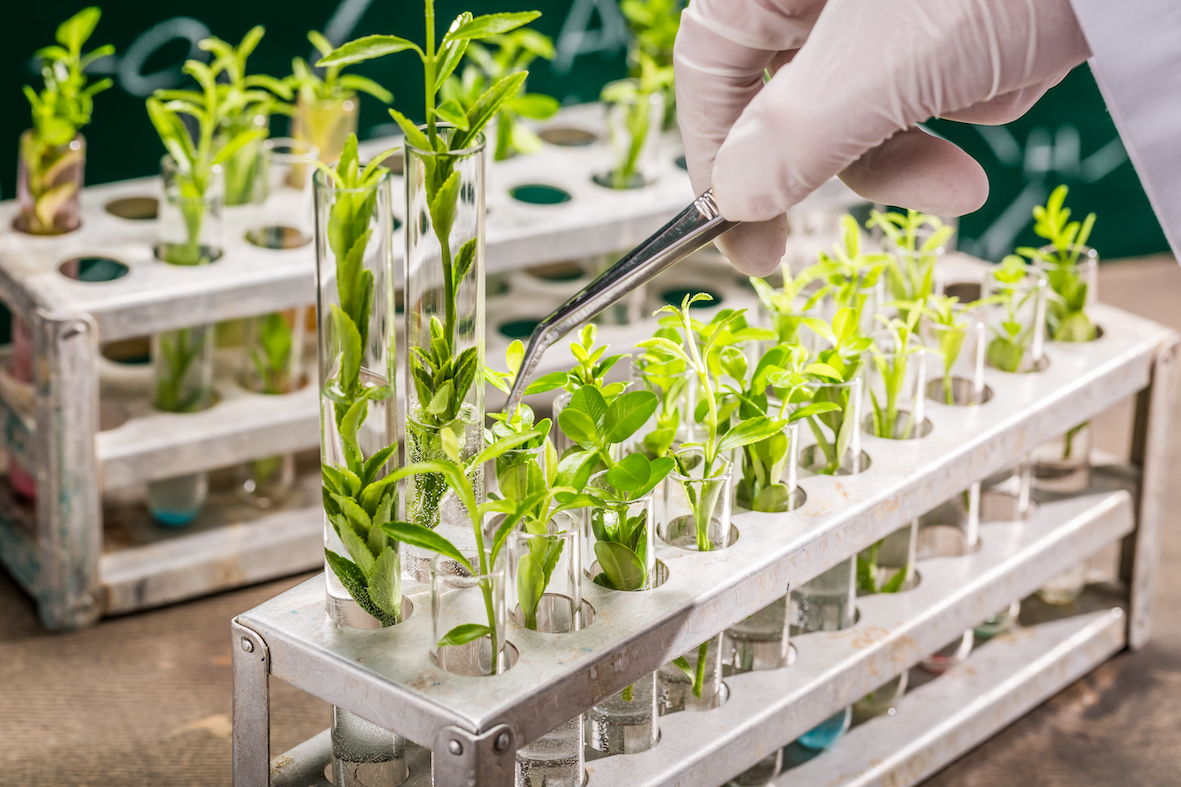
Here, we discuss how plant breeding in rice has successfully increased rice yields in recent years. Much of this success has come from Non-GMO practices, but GMO technologies have also played a pivotal role. In fact, to put enough food on plates in a sustainable manner in the future, GMO technologies will likely be crucial.
Plant Breeding
Plant breeding has dramatically increased yields in rice since the Green Revolution.
Most these gains have largely come from Non-GMO (genetically modified) production. However, GMO technologies have also helped improve pest resistance, protection from drought and flooding, and overall nutritional qualities.
Plant breeding is a theme in SIA we’ll return to many times. Some of the most significant work has come from the International Rice Research Institute (IRRI). It also has affiliates through the Global Rice Science Partnership (GRiSP) in the major producing regions outside of Asia. Their varieties IR8 and IR 64 have been major contributors in improving yields.

The problem with plant breeding, however, is that there’s a theoretical maximum level of yield improvement called ‘the Biomass to Grain Ratio (BGR)’. This level is reached when the non-grain portion of the plant, such as the stems or leaves, can no longer support further grain production.
The BGR isn’t fixed and improves with new technology and plant breeding developments.
Time and time again, cynics have said it’s been reached only to be dashed by innovation. With IR8, the BGR was significantly improved by the reduced biomass and increased grain from a semi-dwarf variety.
This is exactly what the IRRI and the University of Oxford are trying to achieve with the development of C4 rice, which is still at an early stage of development.

Rice plants photosynthesize using the less efficient C3 or more efficient C4 pathways (rice is a C3 and corn is a C4).
The aim is to introduce several C4 genes at once, rather than the traditional one-by-one approach, which uses synthetic biology to shorten the process many times over.
When complete, photosynthetic efficiency should theoretically increase by 50%, and water use efficiency should increase by 100%. This, of course, is highly desirable as we strive for SIA. The methodology is, however, GMO…
Working in the opposite direction to this is global warming. We briefly explained here that the rice plant is ill-equipped to cope with high temperatures and loses yields with high night-time temperatures. So, another component of the IRRI’s work is to develop rice species that perform in extreme heat (40°C).
In one report by the International Food Policy Research Institute (IFPRI), they forecast a 15% yield drop in developing countries and a 12% increase in rice prices by 2050 because of climate change.
It’s also important to remember that increases in rice yields aren’t the same as increases in overall production. Increased production can also be bought, by increasing inputs and especially nitrogen, with all the adverse environmental ramifications that has, especially if the nitrogen source is from synthetic fertilizer.
A Balanced Approach
The IRRI works on both GMO and Non-GMO projects, as well as on a range of SIA related field work.
The GMO work is not without controversy.
One project relates to ‘golden rice’, a genetically modified variety that increases the much lacking Vitamin-A content twenty-fold, although this reduces with lengthy storage times. This vitamin deficiency causes around 600,000 deaths per year in children under 5, as well as 500,000 cases of ‘river blindness’. In 2013, an activist group in the Philippines uprooted experimental plots.

Yuan Longping, the “Father of Hybrid Rice”, controversially came out in favour of GMO rice in 2014, even though China prohibits its production.
Education and Conversion
A second theme, key to SIA, we’ll be developing throughout this series is education.
Although it’s important on advanced farms, we mention it in the context of rice because 80% of the world’s rice is grown on farms of less than one hectare. We do provide one example of a large-scale project but recognize the micro-scale work of many advisers and agricultural extension agents globally.
From 2000 to 2015, Chinese agriculturalists and extension agents engaged nearly 21 million farmers with regionally adapted and well-researched SIA methodologies supported by field trials. The farmers weren’t just growing rice, but corn and wheat as well.
There were 14,000 workshops, 1,152 researchers, 6,500 bureaucrats and technicians. The results were impressive with an average 11% increase in yield, a 16% reduction in fertilizer usage, and a significant reduction in greenhouse gas emissions. The farmers were convinced to change to SIA methods; that’s SIA at work.
Food Waste
Food waste is a scourge. From an SIA point of view, it’s the amount of rice that finishes available for consumption, not what’s produced.
Harvest and post-harvest losses for rice run at an estimate of 10-25% from factors such as vermin and disease, poor threshing techniques, and transportation losses. That’s a problem for SIA…
Conclusion
Plant breeding, education and elimination of waste are all SIA effective and important methods.
Not using GMO technology as part of a holistic approach will make putting enough food on plates in a sustainable way extremely difficult in the future.
From an SIA standpoint, the most useful GMO technology is that which does not increase inputs, or even reduces them.

Other Opinions You Might Be Interested In…
- Sustainable Agriculture: Arable Farming
- Sustainable Agriculture: Arable Nitrogen Use
- Sustainable Agriculture: Tackling Fertilizer Waste Head-On
- Sustainable Agriculture: Advanced Technology to Improve Yields

